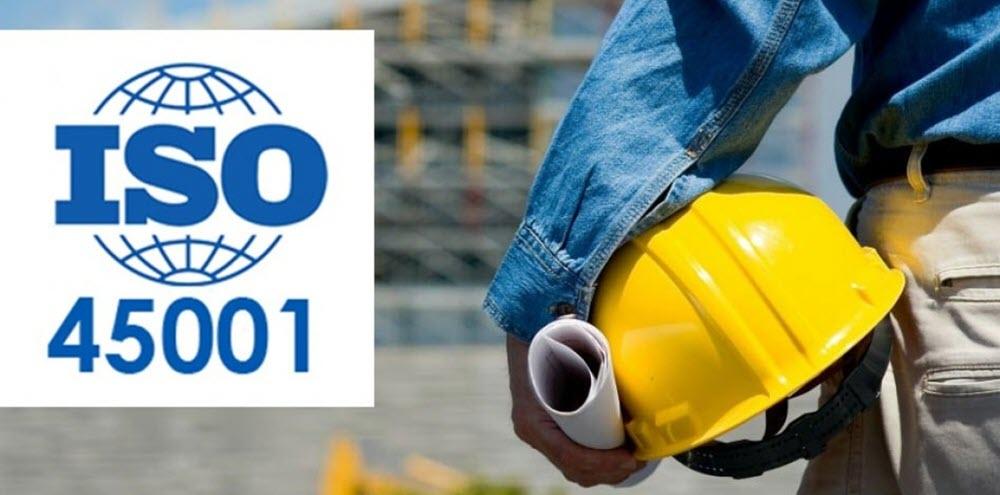EQMS Blog

The Steps To Achieve ISO 45001 Certification
There are many things an employer/employee would like to improve and one of them is the work environment. Improving the work environment increase productivity and builds trust. An ISO 45001 certification reduces an organisations risk for their workers and visitors getting involved in a work-related accident. ISO 45001 certification was introduced by the International Organisation for Standardization (ISO). The ISO 45001 standard defines an international occupational health and safety (OH&S) management system. Achieving an ISO 45001 certification takes some time and effort, however the time and resources spent has a good return on investment if implemented correctly. ISO 45001 was released in 2018 and is based on its predecessor OHSAS 18001. If an organisation already is certified to OHSAS 18001 when going for the ISO 45001 certification, it would need go through a transition from the old standard to the new one.
Steps to Get an ISO 45001 Certification
Differences Between an OHSAS 18001 and ISO 45001 Certification
Knowing the difference between both standards is important. After looking at the gap between both certifications and analysing it, you can make the required changes within your organisation to adapt to the new standard. For organisations who does not have an OHSAS 18001 certification already, they would conduct a gap analysis to the ISO 45001 standard to identify the gaps and define an action list to close them prior to starting the ISO 45001 certification.
Make an Action Plan
Making the required changes is not as easy as it sounds. It will take a lot of efforts and teamwork. To make the changes effectively, make a proper plan for the implementation of the new changes. While making a plan, identifying the responsible staff and timelines is necessary. Identifying relevant legal requirements for an organisation is needed as part of the ISO 45001, which means it is necessary to now the legal requirements to make the implementations successful.
Process and Procedures to Avoid Health Hazards
Identify all the health hazards that could possibly occur in your Organisation. This will ensure proper control can be implemented to mitigate hazards and risks. These can be evaluated in a risk assessment where adequate emergency and operational preparedness response can be defined. Communication holds a great value in ISO 45001 as well. There is great focus on awareness and employee involvement.
Spread Awareness
Health and safety concerns within an organisation is not only one person’s responsibility. You need to look at what proper training and awareness can do to mitigate risks and hazards. Spreading awareness to all parties which has an impact on the OH&S management system will add to the effectiveness of the system. Making employees aware of the OH&S management system will give them an idea of how they fit into it and make them aware of their responsibilities.
Determine Priorities
After gathering data, determine the priorities to achieve the health and safety performance goals. Some people may like the idea of change coming with the ISO 45001 certification and some might not. Establishing an ISO 45001 management system brings a sense of responsibility and ownership in the system.
Internal Audits
Your internal audit access how smoothly your processors are working and if the management system achieves what it is intended to do. If internal audits are implemented correctly, it is one of the best tools to drive continual improvement within an organisation.
Evaluate performance
You need to check what should be monitored to bring in the new changes. How and how often. This should be done to evaluate the performance and effectiveness of your OH&S management system.
Your Organisation will get a lot of benefit from an ISO 45001 certification. But the amount of benefit depends upon its proper implementation in the organisation. Make sure to make an effective plan in order to get the most benefit from ISO 45001.
If you are looking for support with implementing a ISO 45001 OH&S management system or simply need someone to conduct your internal audits, the contact us for a free consultation.

Request a free consultation
Contact us to discuss your needs and see how we can support to reach your goal.

Recent posts

In today's digital age, businesses are constantly exposed to various cyber threats. As a result, companies must adopt a proactive approach to cybersecurity to prevent data breaches, theft, and other...

Quality management systems are essential in ensuring that organisations can deliver quality products and services consistently. The International Organisation for Standardization (ISO) developed the ISO 9001 standard to help organisations...

ISO 14001 is a globally recognised standard for environmental management systems (EMS) that helps organisations manage their environmental impact and improve their sustainability performance. Obtaining this certification demonstrates a company's...
Just a Few of Our Clients
Request a Free Consultation
Contact us to discuss your needs and see how we can support to reach your goal.












